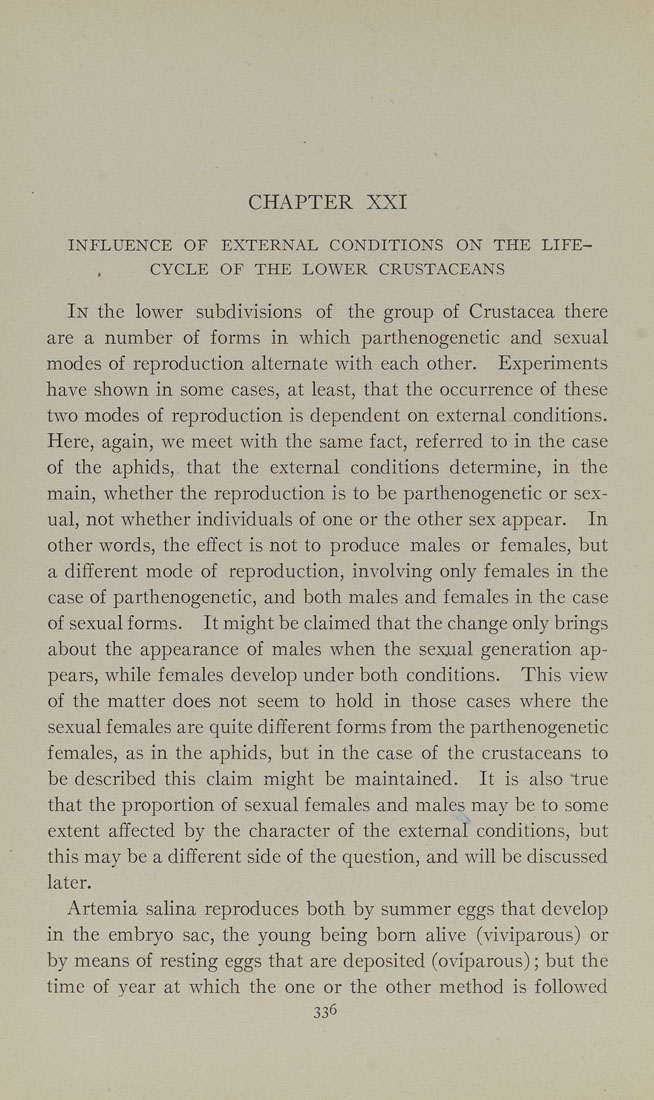CHAPTER XXI
INFLUENCE OF EXTERNAL CONDITIONS ON THE LIFE-
CYCLE OF THE LOWER CRUSTACEANS
In the lower subdivisions of the group of Crustacea there
are a number of forms in which parthenogenetic and sexual
modes of reproduction alternate with each other. Experiments
have shown in some cases, at least, that the occurrence of these
two modes of reproduction is dependent on external conditions.
Here, again, we meet with the same fact, referred to in the case
of the aphids, that the external conditions determine, in the
main, whether the reproduction is to be parthenogenetic or sex¬
ual, not whether individuals of one or the other sex appear. In
other words, the effect is not to produce males or females, but
a different mode of reproduction, involving only females in the
case of parthenogenetic, and both males and females in the case
of sexual form.s. It might be claimed that the change only brings
about the appearance of males when the sexual generation ap¬
pears, while females develop under both conditions. This view
of the matter does not seem to hold in those cases where the
sexual females are quite different forms from the parthenogenetic
females, as in the aphids, but in the case of the crustaceans to
be described this claim might be maintained. It is also true
that the proportion of sexual females and males may be to some
extent affected by the character of the external conditions, but
this may be a different side of the question, and will be discussed
later.
Artemia salina reproduces both by summer eggs that develop
in the embryo sac, the young being born alive (viviparous) or
by means of resting eggs that are deposited (oviparous); but the
time of year at which the one or the other method is followed
336
|








